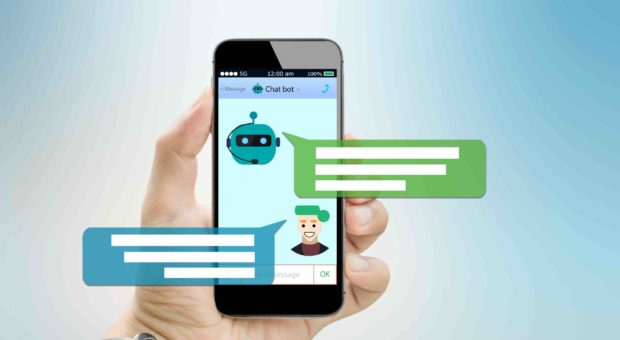
If you’re a copywriter, content writer, or any kind of marketing writer—think: blogs, emails, newsletters, social posts, taglines, etc.—you might be worried that AI is coming for your job. The good news is, you shouldn’t be. Instead, it’s time to start thinking about how we, as writers, can shift our skill sets to become directors and editors, with AI as our (wonderfully inexpensive) copywriter.
The thing about AI is that it’s constantly getting better and smarter, but as of this writing, it still can’t think for itself. It needs to be prompted. And that’s where human writers come in. AI needs a boss to tell it exactly what to do, and it needs an editor to help refine its work. If you used to be a content writer, congratulations, you’ve been promoted. You’re now a content director, and AI is your first direct report.
So how can you best utilize this new resource to help generate content? It starts with understanding AI’s writing strengths and weaknesses. In order to assuage some of the common fears that AI is going to steal writers’ jobs, let’s start with its weaknesses.
- Direction. AI might be really, really smart, but it still doesn’t sit in on strategy meetings or attend creative briefs. Instead, it requires a written brief to get to work. And it needs to receive instructions in a very specific way. That’s where the “content director” (formerly content writer) comes in. The content director’s job is to strategize about themes and key messages, and then write really good, really specific prompts that enable AI to output the best possible written work.
- Tone. While AI is advancing quickly in this space (especially when you feed it plenty of sample content to pull from), it’s still pretty easy to spot unedited AI content on the internet. There’s something awkward and sterile about it—something formulaic. While it might stack up reasonably well against run of the mill “content factory” writing—it’s definitely not yet on par with skilled writers. Once again, this is where the content director comes in. Part of their job is to take what AI generates and revise it—changing out words, adding examples or reworking the flow—to better resemble brand-aware, human-generated content.
- Fact-Checking. While direction and tone are known weaknesses of AI weaknesses, its biggest downfall is its inability to distinguish between verified facts and internet fiction. It’s true that AI has made significant advances in this space—and in many cases actually helps sort out “bad” information; email spam filters, for example, are just an early version of AI. But unfortunately, internet trolls—er, users, are equally quick at figuring out ways to outsmart AI’s algorithms. If enough of them share incorrect information online, it’s entirely possible that AI will consider it to be true. In fact, left unchecked, it’s easy for AI to accidentally contribute to the spread of fake news. For this reason in particular, it’s critical that content directors edit, verify and properly cite information generated by AI.
Now that we know what AI’s weaknesses are, let’s focus on its strengths, and how content directors can leverage AI tools to make their own jobs easier.
- Topic Generation. Have you ever sat down to write a blog post and struggled to think of a relevant topic that you haven’t already written about? How about the times you’ve had 100 different ideas in your head but can’t figure out how to organize or arrange them into concise themes? AI to the rescue. It turns out writer’s block is a distinctly human phenomenon, which means AI is immune and always ready to help you come up with new ideas. All you have to do is give it some guardrails around the subject matter you want to cover. For example, try prompting, “Write 10 blog topics related to [insert subject matter] that would be relevant to [insert primary target audience].” You’ll get topic ideas right away, but you can continue to refine them by tweaking your prompt based on the results you like the best. We recommend starting with a somewhat broad prompt and refining it over time by making the ask more and more specific. In just a few minutes, you should be able to generate a list of at least 5-10 good fit topic ideas.
- Organizing and Summarizing. One of AI’s most impressive strengths is its ability to organize and summarize information. Not only can it compile vast amounts of information found across the internet really quickly, but it can also collect and analyze specific data sets when instructed. For example, if you forgot to take notes during a Zoom call, simply save the transcription of the meeting, feed it into an AI software program, and ask the program to write a set of meeting notes. For even better results, be specific in your prompt around the type of information you’re looking to pull from the transcript. You can ask it to summarize a specific meeting attendee’s point of view, highlight their significant contributions to the conversation, or summarize agreed on next steps. Other ways you could use AI to help organize and summarize information is by asking it to write summary paragraphs or email blurbs about your blog or website content. Prompts like “Summarize this blog post in one paragraph that includes a call to action to read the full post” can save you hours of time when writing email or social copy to drive traffic to your blog or website.
- Proofing. AI is built on algorithms. Algorithms are built on rules. Proofing is essentially just one big set of rules. Which means…you guessed it…AI makes an excellent proofreader. There are dozens of AI proofreading tools out there—many of which are free or inexpensive—and they can help with proofreading anything from email drafts to manuscripts. While the content director should always review AI’s suggested edits for tone and accuracy, it’s a great way to eliminate simple errors in spelling, spacing, or grammar.
The bottom line is that AI isn’t coming for writers’ jobs…yet. But it IS changing them. Our charge is to adapt our skill sets to become excellent AI managers, positioning this new technology as a tool rather than a threat.
About VONT Performance Digital Marketing
At VONT, we believe that change is the only constant in the digital world—and that excites us. When tools and environments are constantly changing, new opportunities to help our clients achieve success are constantly arising. Each new advertising technology, social platform, or design approach allows us to improve on the results we achieve for our clients.
We believe in the idea of continual fine-tuning so much that we named our company VONT, which means to achieve exponential improvement in incremental steps. It is our core belief, and the reason why we are not simply a web design company or simply a digital advertising agency, but rather a long-term, single-source partner providing a comprehensive array of web development and digital marketing capabilities.

![Building Search Engine Authority with a Content Hub [Mainely Tubs Case Study]](https://www.vontweb.com/wp-content/uploads/2021/03/internet-search-engine-1433323_1280-620x340.jpg)
